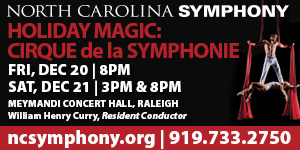The overarching theme for music director Dmitry Sitkovetsky’s first 2009 concert was “The Great Russian Melodists.” The three works ranged from the Romanticism of the late czarist period to a masterpiece from the late Stalinist era. These challenging works found the muisicians of the Greensboro Symphony Orchestra at the top of their form. Guest pianist Konstantin Lifschitz made a welcome return to the masterworks series. Although the audience in War Memorial Auditorium was slow to fill the hall, the attendees were unusually quiet and attentive, and at the end, warmly appreciative. There were neither cell phone interruptions nor choruses of coughing.
Franz Liszt honed the form of the single-movement symphonic fantasy or tone poem as an orchestral work often inspired by a literary source. Peter Ilyich Tchaikovsky (1840-1893) developed the form to new heights with such works as the frequently programmed “Romeo and Juliet” Fantasy-Overture or Sitkovetsky’s selection, “Francesca da Rimini, Symphonic Fantasy after Dante,” Op. 32. During post-concert comments, the conductor said one reason this work is heard so seldom is it is too long for an opening work but too short to play as a single work after intermission. Tchaikovsky was inspired by the most famous episode in Dante’s Inferno. In Hell, Dante and his Muse hear the story from the damned illicit lovers, Francesca and Paolo. The elderly Gianciotti had used his handsome younger brother Paolo as a proxy suitor. After the doomed marriage, the elder brother surprised the young lovers and murdered them. Tchaikovsky’s shattering, slow opening paints Hell in all its hopelessness. A gentle and lyrical clarinet solo begins Francesca’s recounting of the story. Swirling strings, blazing brass, and pounding percussion portray the lovers’ souls being swept up in Hell’s torments. The glowing clarinet solo was phrased superbly by Kelly Burke. All sections of the orchestra played on the edges of their seats with lock step attacks and immediate response to every change in dynamics or tone. Much of the music was firmly supported by the richly hued cellos and double basses.
Rhapsody on a Theme of Paganini, Op. 43, by Sergei Rachmaninoff (1873-1943), has been frequently programmed throughout our state, and it has not lacked for fine performances. My first response, after hanging on throughout pianist Konstantin Lifschitz’s controlled rollercoaster ride through the score, was “Wow!” Much of the inspired playing of the soloist and the orchestra was like the give-and-take of chamber music. The accompaniment was not just precisely fitted around a headlong solo but had the sense of re-creation in the heat of the moment. Seldom has this delightful series of variations seemed so fresh. The collaboration of Lifschitz, Sitkovetsky, and the musicians was extraordinary as they seemed to strike musical fire from each other like a hammer and anvil. As a complete contrast, Lifschitz’s encore was a limpid and timeless performance of the “Sarabande” from the Fourth English Suite in F by J.S. Bach.*
The Symphony No. 5 in B-flat, Op. 100, by Sergei Prokofiev (1891-1953), was composed in the summer of 1944 when the composer was still on a war-imposed evacuation from Moscow. Despite the horrors of years of slaughter, it was clear the Nazis would soon be crushed. The composer wrote in 1945, “I regard the Fifth Symphony as the culmination of a long period of my creative life,” marking his return to the form. He viewed the work as “a symphony of the grandeur of the human spirit.” The first and third movements are slow and are massive with an overwhelming sense of unstoppable forward motion. The second movement is a quicksilver and sardonic scherzo with a strident climax ratcheted up at the end. The opening of the finale suggests the massive first movement’s mood before it dashes toward a grotesque and sardonic end. Sitkovetsky’s phrasing and dynamic nuances were excellent, and his musicians responded with razor-sharp attacks and lock-step ensemble. Among the many fine solos were those by clarinetist Kelly Burke, flutist Debra Reutter-Pivetta, oboist Mary Ashley Barret, trumpeter Anita Cirba, harpist Helen Rifas, and principal horn Robert Campbell. The percussion section was outstanding.
*One oddity in this concert was the use of what appeared to be a 7′ ballroom or semi-concert grand piano for Lifschitz’s concerto performance. The presence of a full 9′ grand piano on stage within the orchestra, for the Prokofiev, re-enforced the incongruity.
*Edited/updated 2/2/09












